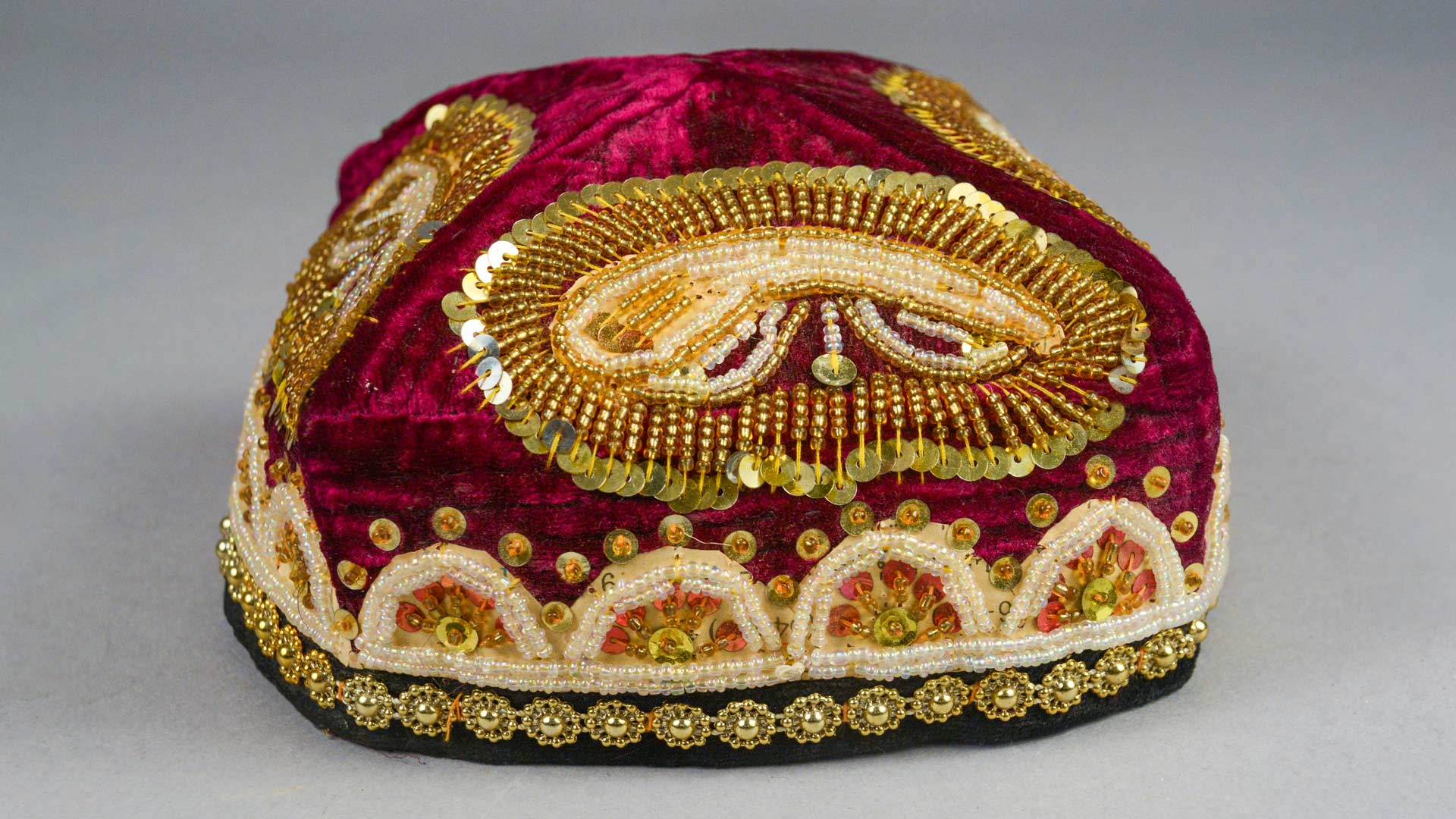
Featured Objects: Warfield Hats
- Post Date: 1/30/2023
- Author: Hayat Zarzour, former registration student assistant
- Reading Time: 7 minute read
Some of the hats already had information related to their country of origin or time period, but many did not—or they only had general suggestions, some of which turned out to be incorrect upon further research. Most such hats were those which were of Central Asian origin, which were originally guessed to be Eastern European or South American. They initially proved difficult to identify and research, but once the country of origin was identified for these hats, they were especially interesting to read and learn about.
-
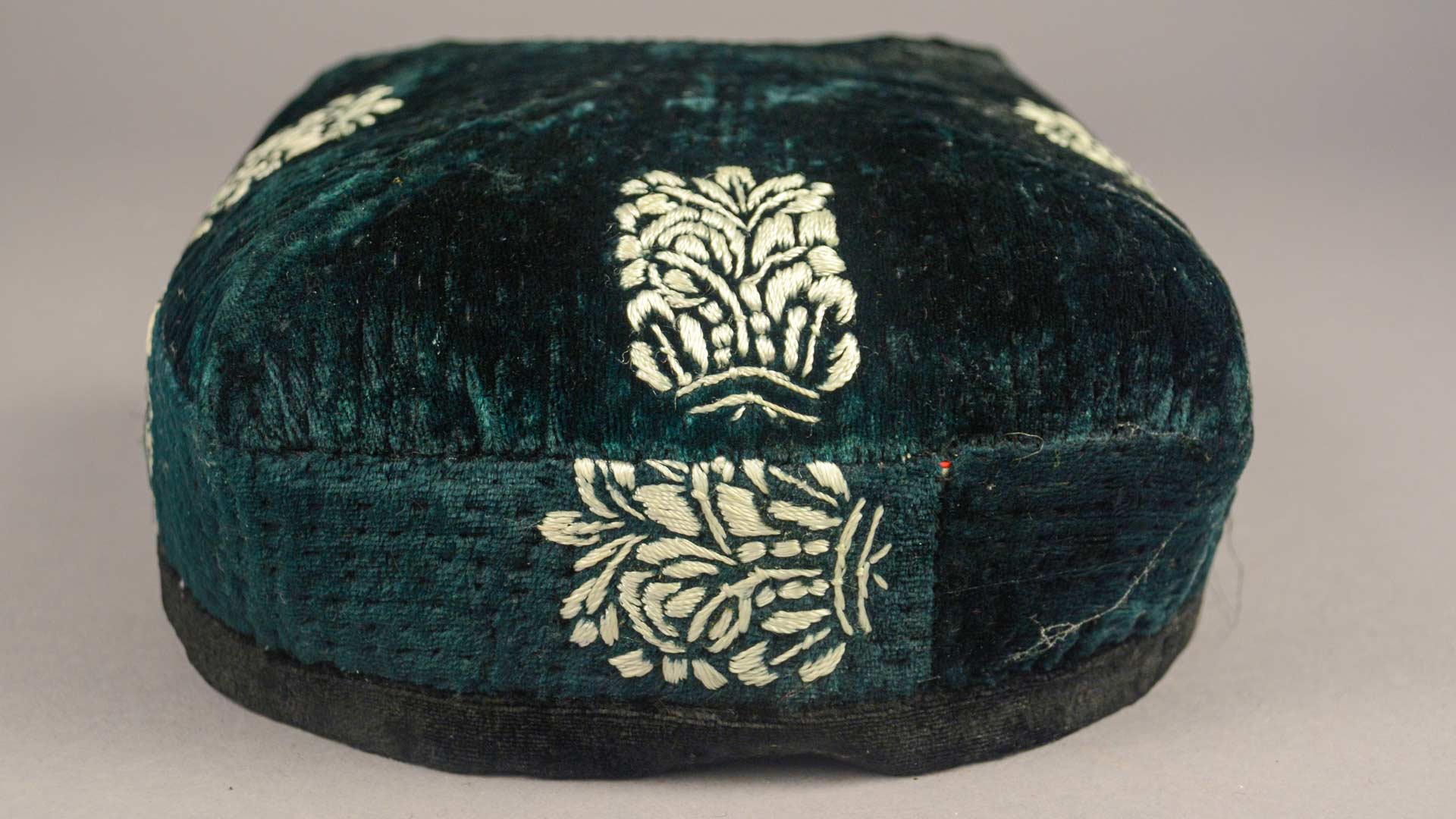 Hat 2019.03.0020
Hat 2019.03.0020
This is a tubeteika hat. Tubeteika hats are commonly worn in Uzbekistan, Kazakhstan, Kyrgyzstan, and Tajikistan as well as in Muslim-populated regions of Russia and China. Tubeteikas such as this one, with a squarer base, are specifically called a "doppa" or "doppi," and are most commonly worn by Uzbeks and Uyghurs. This specific hat would have derived from Uzbekistan. Doppa made of dark fabric with four white embroidered patterns, such as this hat, originated in the Uzbek city of Chust, and are worn by men. This hat would have been sold in a shop or bazaar.
-
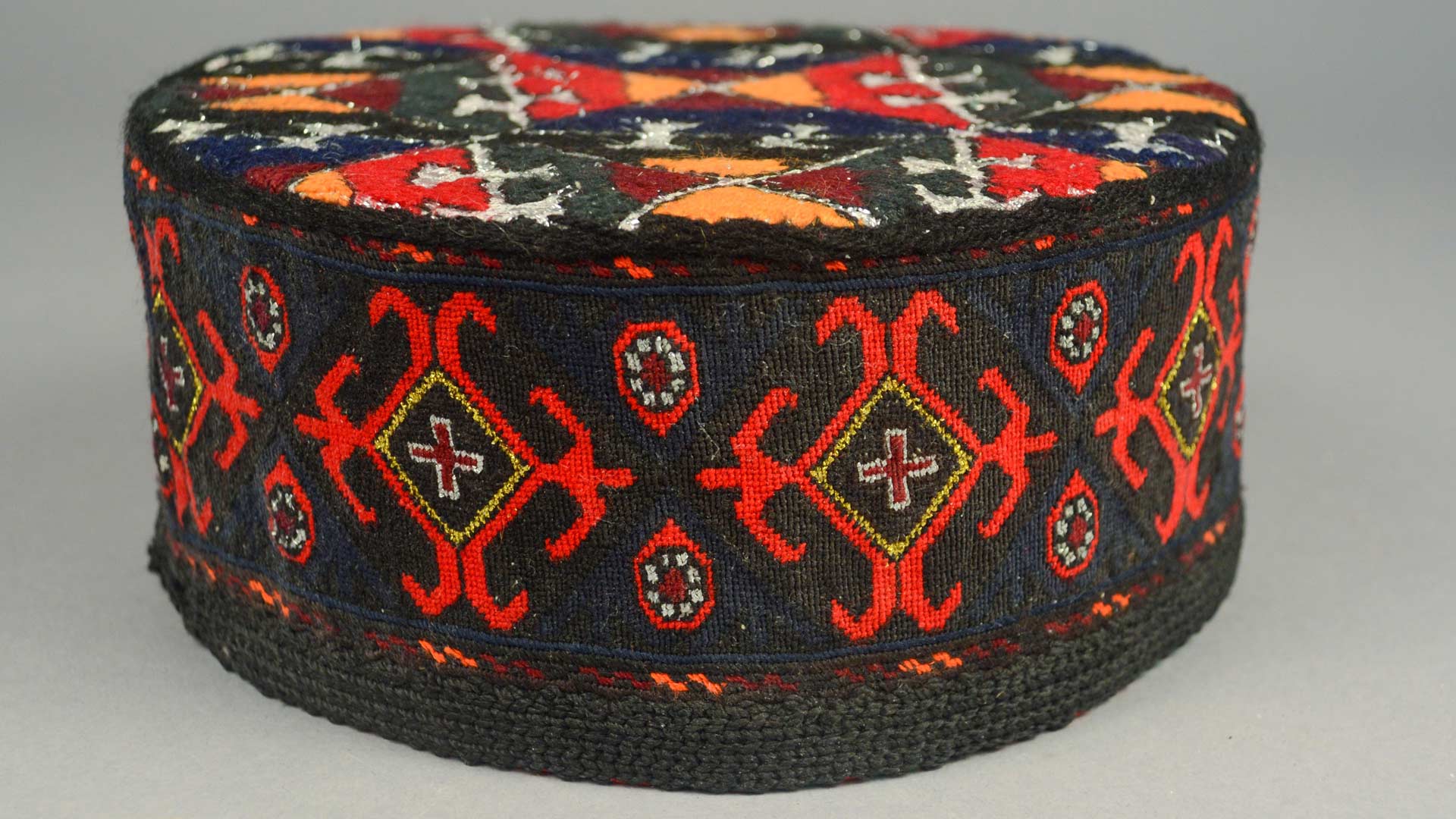 Hat 2019.03.0015
Hat 2019.03.0015
This hat also appears to be a tubeteika, although I have not been able to narrow down which specific country or region it would have derived from. It appears to be closest to a toqi, which are round hats with colorful embroidery that derive from Tajikistan and are mainly worn by women but may also be worn by men.
-
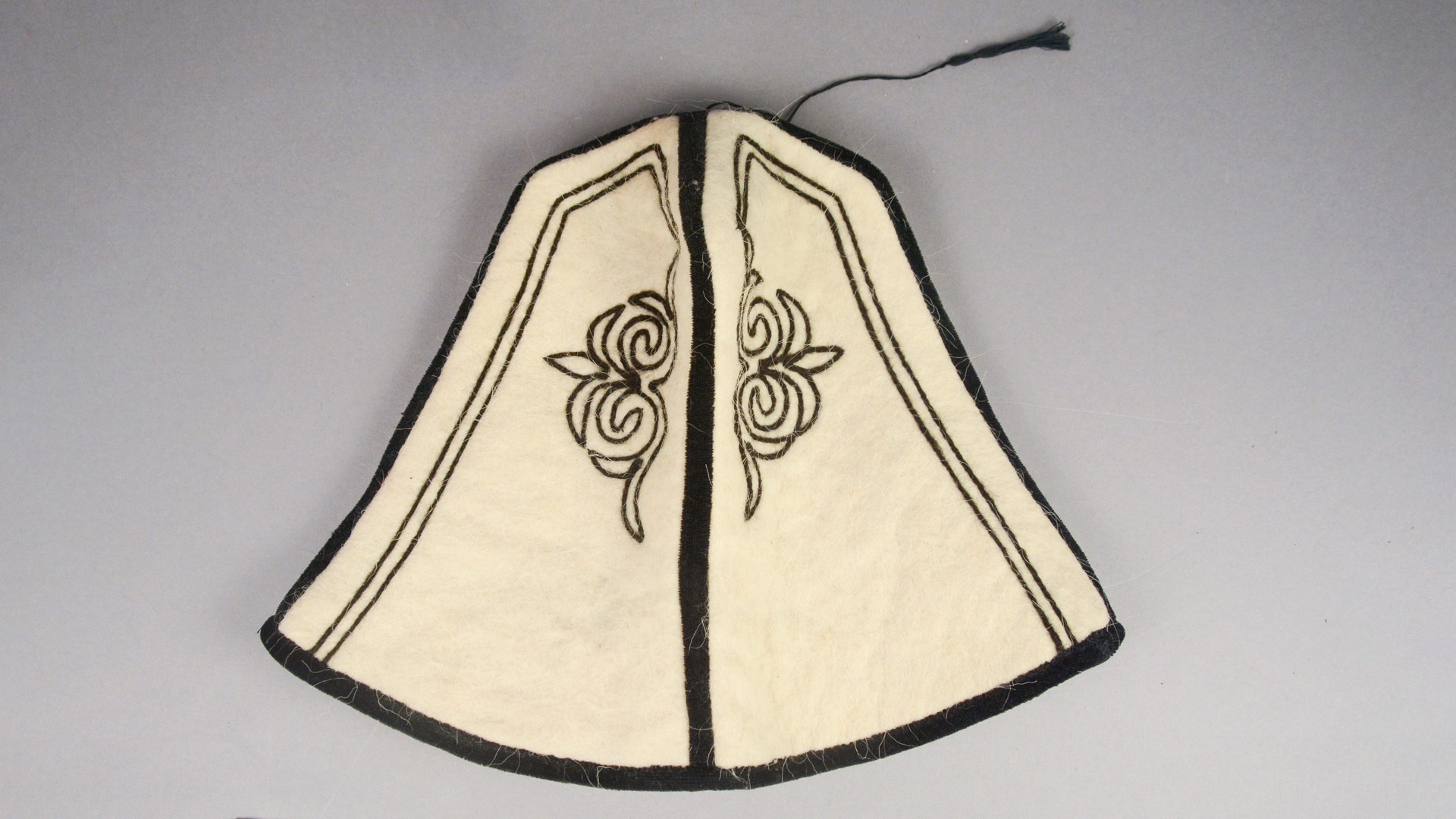 Hat 2019.03.0016
Hat 2019.03.0016
This is a kalpak (properly “ak kalpak”) hat, which are worn by men in Kazakhstan and Kyrgyzstan. It is the national headdress of Kyrgyzstan. This is a typical kalpak hat meant for everyday wear, white with black embroidery. Kalpak hats are still worn today in towns and villages but can be seen in the major cities as well. The kalpak is very iconic of Kyrgyz culture and has its own national holiday in Kyrgyzstan, March 5th, along with being awarded intangible cultural heritage status by UNESCO in 2019. The hat’s shape and color are meant to represent Kyrgyzstan’s snowy mountains, and its four panels are meant to represent the four cardinal directions. The designs on each panel are meant to represent harmony and balance, which values are highly regarded in Tengriism, the indigenous belief system of Kyrgyzstan.
-
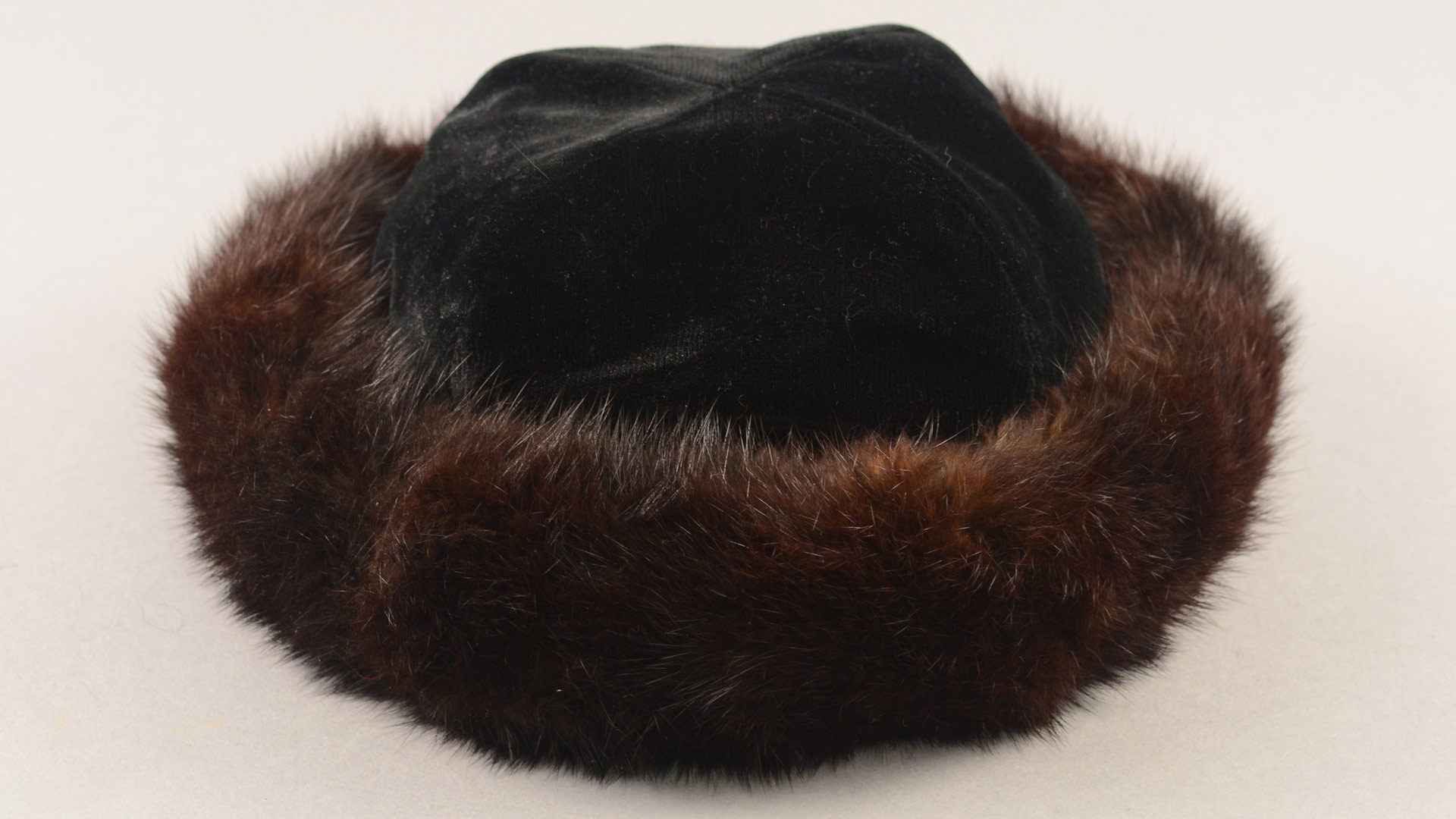 Hat 2018.06.0034
Hat 2018.06.0034
This is a tebetei hat, a winter hat with a fur trim. The tebetei is also a national headdress in Kyrgyzstan, but is common in other Central Asian countries and among Russian Tatars as well.
-
 Hat 2018.06.0039
Hat 2018.06.0039
This is likely Central Asian or Russian. The hat is made from karakul wool. Karakul wool hats worn in ex-USSR countries tend to be cylindrical or circular, such as this hat, which differentiates them from conical karakul hats worn in Pakistan and India.
-
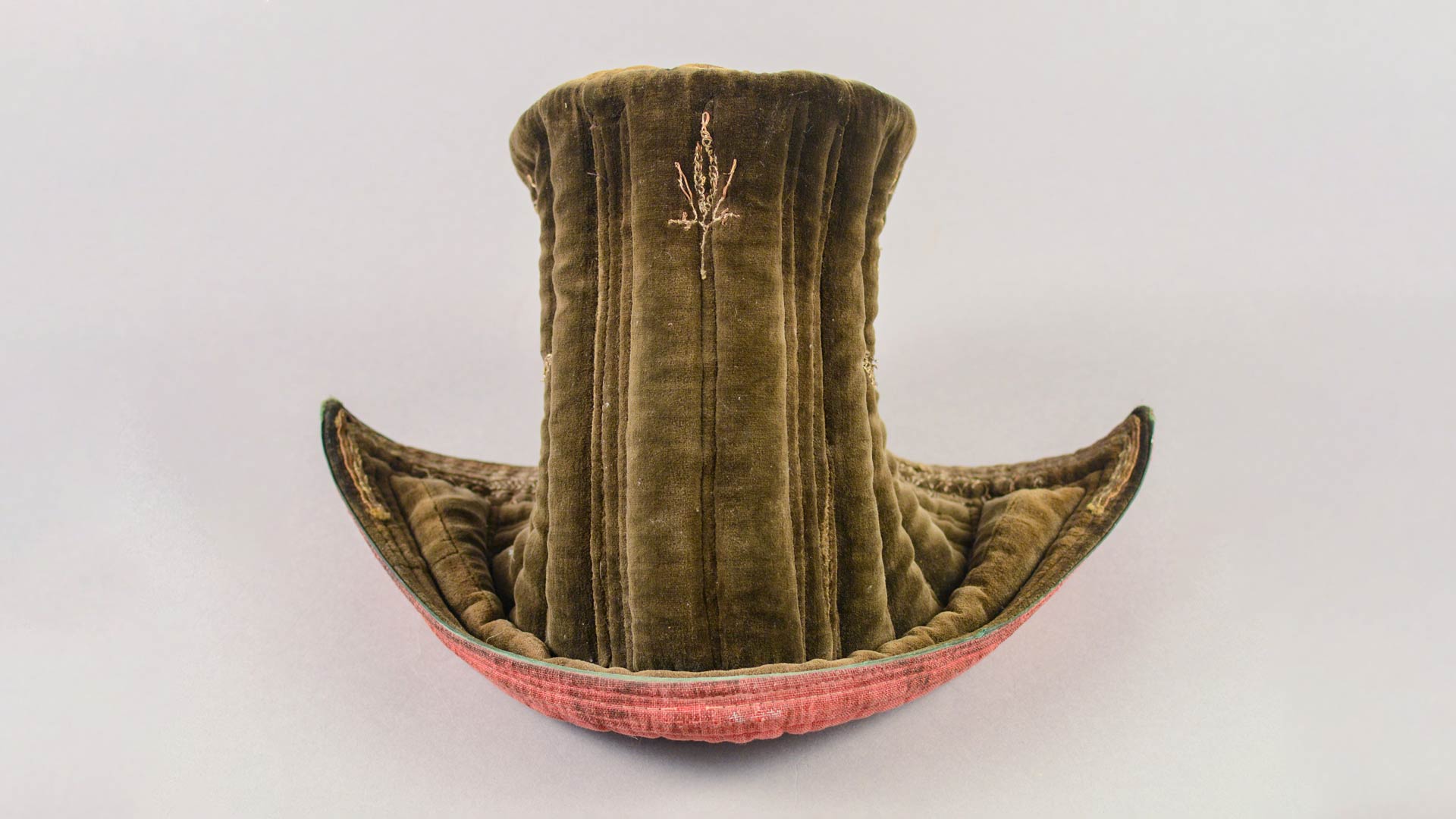 Woman's Hat 2018.06.0023
Woman's Hat 2018.06.0023
This is a tibi hat, a part of traditional dress for women in the Ladakh region of Kashmir. Despite their sophisticated look, tibi are commonly worn in everyday settings in Ladakh.
-
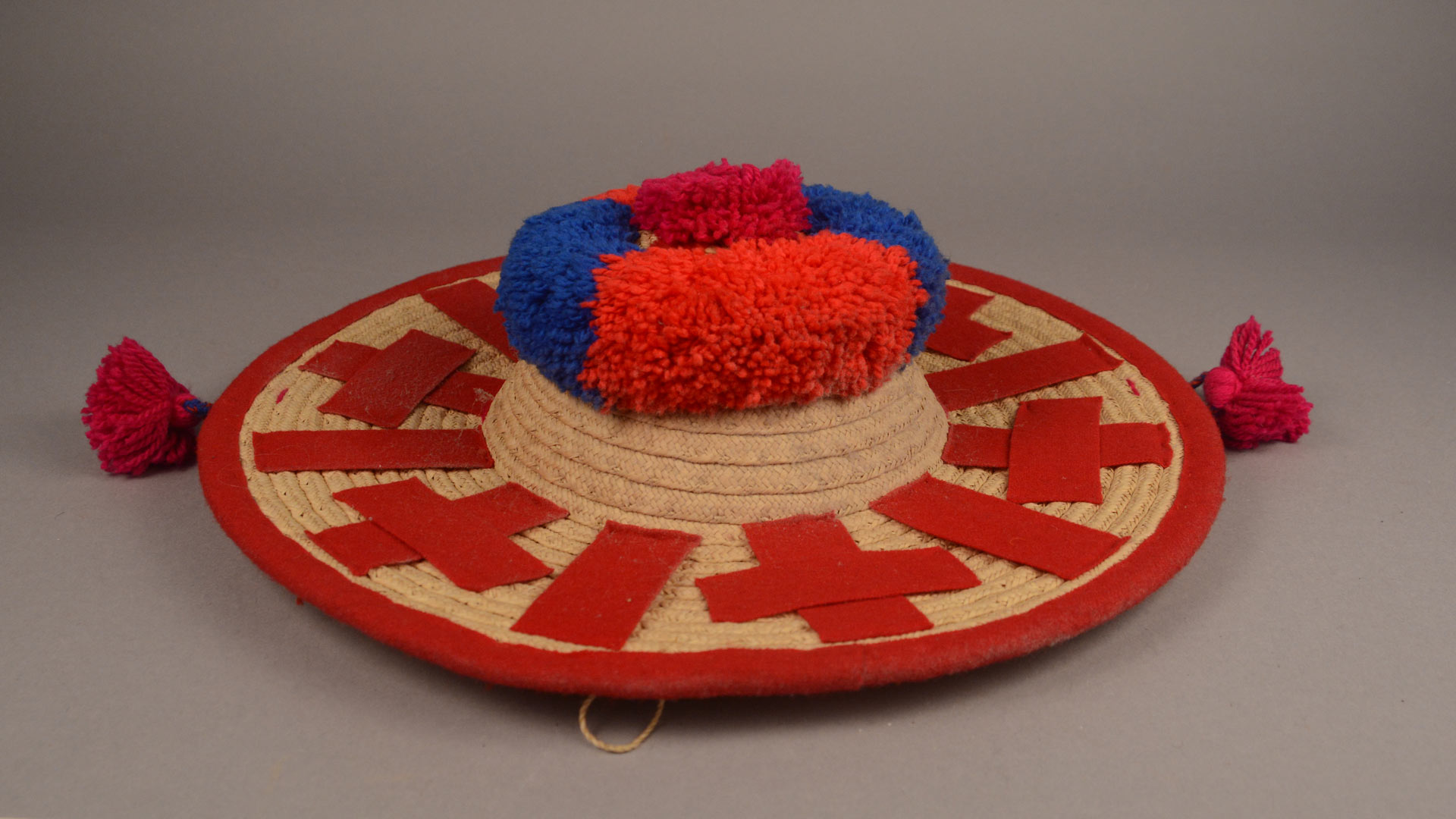 Hat 2019.03.0014
Hat 2019.03.0014
This is a Mayan style of hat. Chiapas, where this hat was made, is the center of Mayan culture in Mexico, and is specifically home to Tzotzil Mayans. Festive straw hats such as this one are made and worn by Tzotzil men in Chiapas.
Researching these hats was difficult as there was no regional information accompanying any of the hats from Central Asia. I read the descriptions about the hats and performed a reverse image search of our hat photographs before I was able to gather information that they are from Central Asia. Once I got a match for the first tubeteika hat, I was easily able to find information on the other Central Asian hats. The most surprising difference between our initial research and the actual background of an artifact involved the kalpak hat; it had been thought to be South American due to its shape and material, but in fact, turned out to be the most iconic hat of Kyrgyzstan.
-
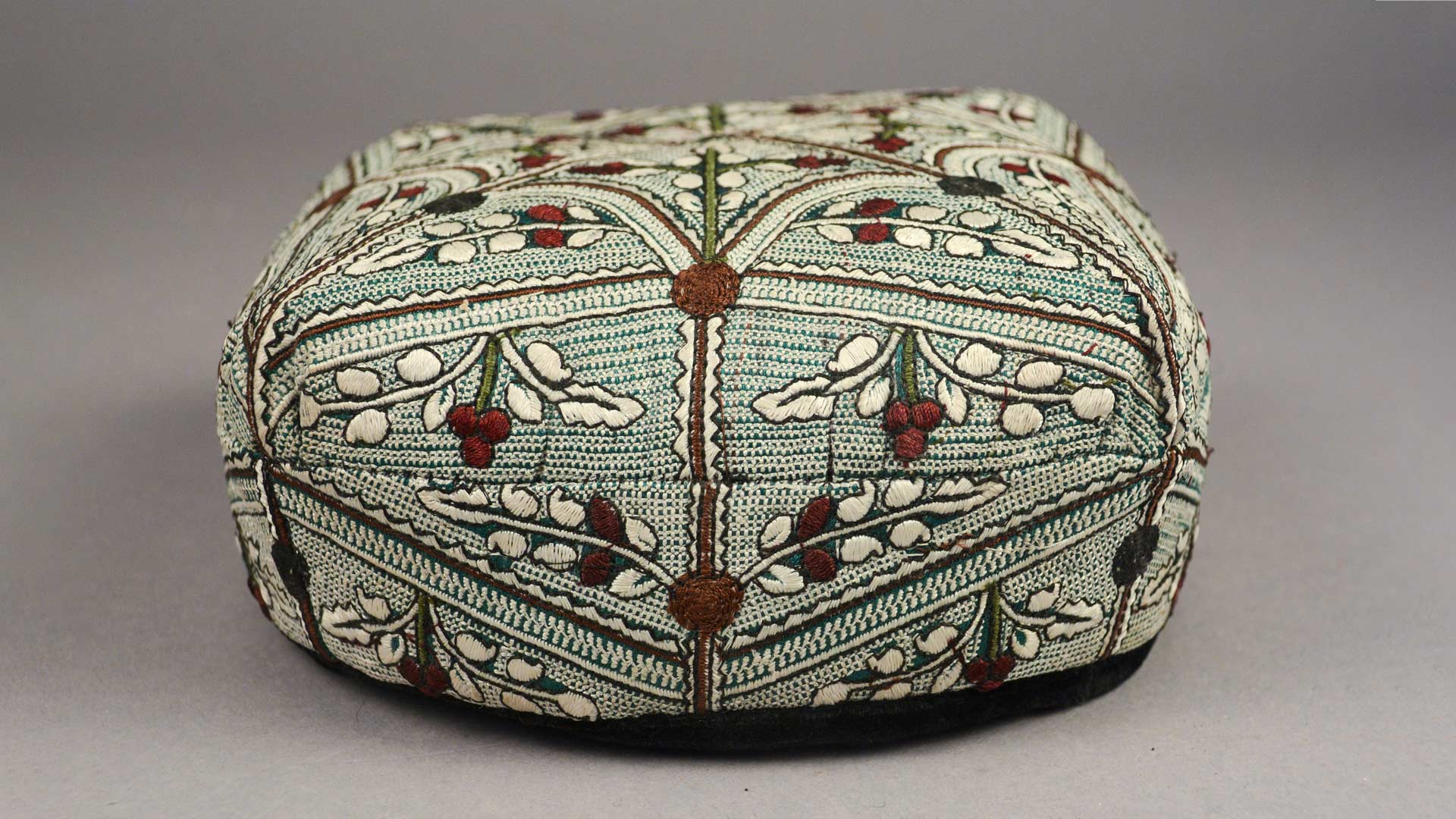 Hat 2019.03.0017
Hat 2019.03.0017 -
Hat 2019.03.0019
-
 Hat 2019.03.0018
Hat 2019.03.0018
-
- Share:
- Subscribe to Newletter
- Giving
